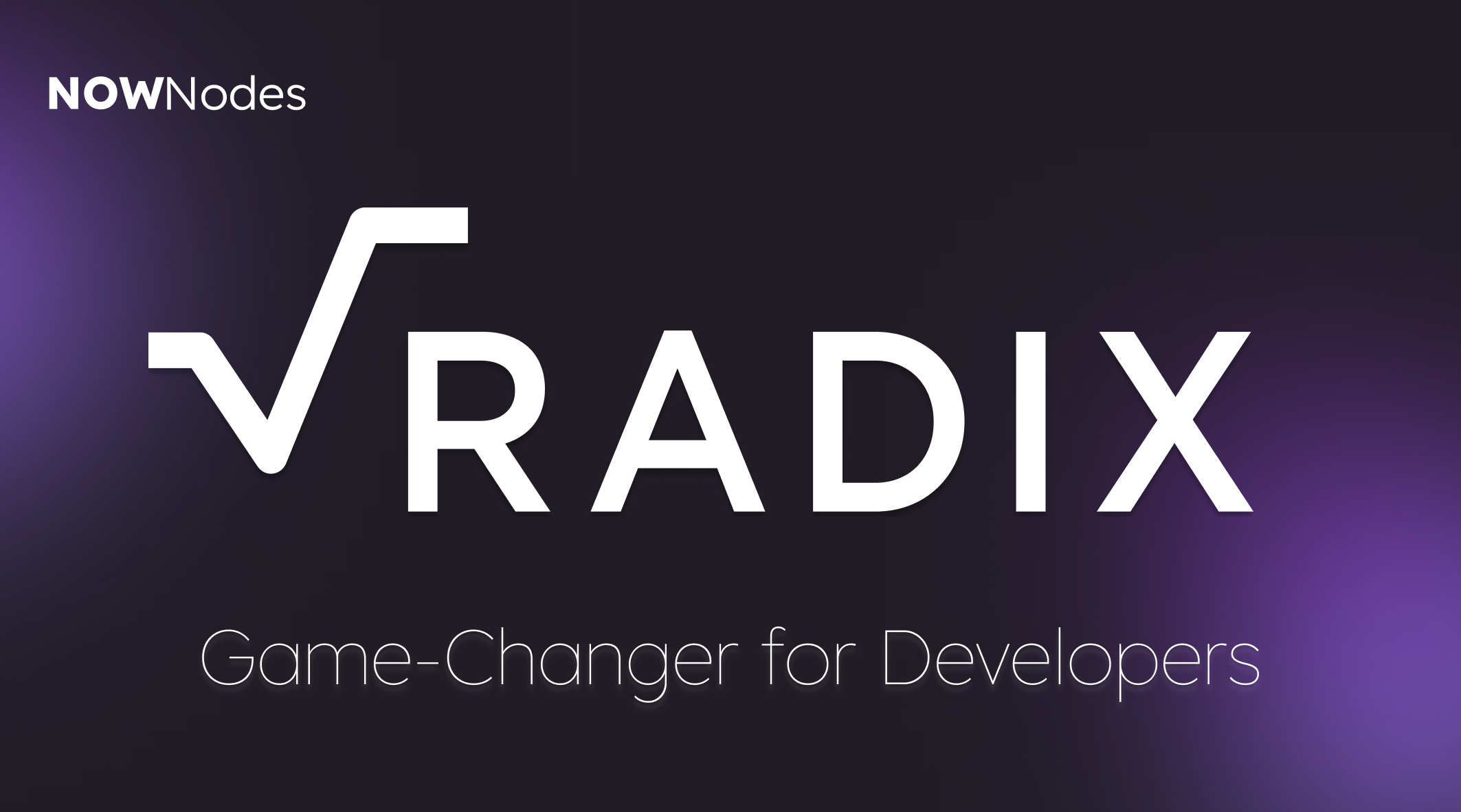Radix is transforming blockchain development with innovative features like the Cerberus consensus protocol, which provides secure, scalable transactions through unique sharding. Designed for developers, Radix’s Scrypto language makes DeFi and dApp development efficient and secure, while low transaction fees and a user-focused ecosystem support accessible, cost-effective applications. Radix’s robust community and diverse real-world applications in DeFi, gaming, and supply chain management make it a standout choice for scalable blockchain solutions.
Introduction
Radix stands out as a powerful, developer-focused platform designed to address the challenges of scalability, security, and user experience that have long hindered decentralized application (dApp) growth. Built from the ground up to be scalable, secure, and efficient, Radix offers blockchain developers a compelling alternative to traditional systems.
Overview of Radix’s Blockchain Architecture
Radix has revolutionized the underlying architecture of blockchain with its unique approach to consensus and scalability, specifically through the Cerberus consensus protocol. Traditional blockchains face significant limitations in scalability because they process transactions sequentially within a single chain or rely on complex, resource-intensive methods like layer 2 solutions. In contrast, Radix has designed Cerberus to offer linear scalability, meaning the network can handle an ever-increasing number of transactions without slowing down as more nodes and users join.
Cerberus achieves this scalability through sharding, a technique that splits the blockchain into multiple, smaller chains. Unlike other sharding models, which can create compatibility issues across shards, Cerberus allows every shard to communicate seamlessly. This interconnected network of shards not only distributes transaction processing across the network but also ensures each transaction’s security and transparency. For developers, Radix’s architecture provides a scalable, fast, and secure foundation on which to build, making it ideal for complex applications and high-volume dApps that need consistent performance.
Key Features of Radix for Blockchain Developers
Radix brings several innovative features to blockchain developers, making it an ideal choice for building scalable, secure, and low-cost dApps.
- Scalability: Unlike many existing blockchain solutions, Radix provides linear scalability, which ensures that as more users join the network, it can handle increased activity without slowing down. This is a major advancement for developers looking to scale applications quickly.
- Smart Contract Functionality with Scrypto: Scrypto is Radix’s purpose-built programming language tailored to create secure and efficient smart contracts. Designed specifically for decentralized finance (DeFi), Scrypto provides the tools developers need to build high-performance applications without sacrificing security.
- Low Transaction Fees: Radix’s architecture minimizes transaction costs, allowing developers to create applications that operate affordably even at high volumes. For developers, this means they can build dApps that are economically viable, even with frequent interactions.
- User-Centric Design: Radix is built with both developers and users in mind, focusing on ease of use. Its developer tools, clear documentation, and accessible language simplify the development process, helping teams move from concept to deployment seamlessly.
Security Innovations in Radix
Radix prioritizes security at its core, understanding that the credibility of any blockchain relies on its ability to protect users’ assets and data. The Cerberus consensus protocol addresses security in a groundbreaking way. Most blockchains achieve security through decentralization, with many nodes agreeing on the validity of each transaction. However, as networks grow, maintaining security while increasing transaction speed becomes challenging.
Cerberus’s sharding model directly tackles this issue. Each shard can independently validate transactions, distributing processing across the network. This setup not only prevents bottlenecks but also enhances security by making the network less vulnerable to common attacks. For example, malicious entities would need to compromise multiple shards simultaneously to disrupt the system, which is practically impossible. Furthermore, Radix’s protocol includes measures against double-spending and reduces the risk of smart contract vulnerabilities. By ensuring that developers can build on a highly secure platform, Radix creates a trustworthy environment that encourages users to engage with dApps confidently.
Radix Ecosystem and Community Support
A strong developer community and an ecosystem of tools and resources are crucial for blockchain adoption, and Radix excels in fostering this support network. Unlike many platforms that focus solely on technical features, Radix invests heavily in creating a supportive environment for developers, from providing well-documented resources to offering a range of development tools.
Radix offers extensive documentation that breaks down complex concepts into digestible formats, making it easier for developers at any experience level to dive into its ecosystem. In addition, Radix organizes community-driven initiatives, hackathons, and developer grants to incentivize innovation. The Radix developer portal is a one-stop resource, offering tutorials, forums, and real-time support, which greatly reduces the learning curve for new developers. This community-centric approach not only helps developers adopt Radix’s technology quickly but also encourages knowledge sharing, collaboration, and the continuous improvement of the platform.
Real-World Applications and Use Cases
Radix’s unique features are proving valuable across various industries, particularly in DeFi, gaming, supply chain, and beyond. Developers are leveraging Radix’s strengths to create applications that address the limitations of traditional blockchains, such as transaction speed and cost. For instance, DeFi applications built on Radix benefit from the platform’s low transaction fees and fast transaction processing, making them more accessible to everyday users.
In the supply chain sector, Radix’s sharding and scalability make it possible to track products across multiple points with minimal latency, providing end-to-end transparency in complex logistics networks. Gaming applications, another promising use case, leverage Radix’s ability to handle a high volume of transactions simultaneously, enabling real-time asset transfers and interactions in-game. This flexibility also extends to NFTs, where Radix’s fast transaction capabilities allow for more interactive, dynamic NFT applications.
Each use case demonstrates Radix’s capability to handle demanding applications that require a combination of scalability, speed, and security. By providing the infrastructure that meets these needs, Radix allows developers to push the boundaries of blockchain technology and bring new innovations to life.
Conclusion
Radix’s distinct approach to scalability, security, and user experience makes it an appealing choice for blockchain developers. With features like Scrypto for smart contracts, the Cerberus consensus protocol for secure scalability, and support for low transaction costs, Radix equips developers with the tools they need to build scalable, innovative, and secure dApps. As more developers turn to Radix, the platform continues to prove itself as a game-changer in the blockchain development space.
Interested in building on Radix and harnessing its cutting-edge features? NOWNodes provides full access to Radix nodes, enabling you to dive into Radix’s powerful ecosystem with ease. Start exploring Radix NOW:



